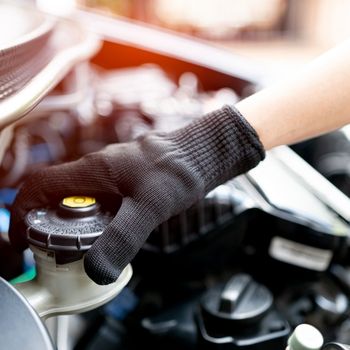 Multiple fluids keep cars running, from engine oil that reduces friction to transmission, brake and power steering for efficient operation. With time, these fluids start to break down, thicken and pick up debris. These changes make fluids less efficient and keeping them in your vehicle can increase wear and tear.
Multiple fluids keep cars running, from engine oil that reduces friction to transmission, brake and power steering for efficient operation. With time, these fluids start to break down, thicken and pick up debris. These changes make fluids less efficient and keeping them in your vehicle can increase wear and tear.
Along with routine changes, occasional fluid flushes are recommended. As you keep up with regularly scheduled maintenance, here’s what you should know about fluid flushes.
Importance of a Fluid Flush
Fluid flushes help extend the life of your vehicle. As debris and contaminants accumulate, the effectiveness wanes. Circulating these fluids through your car increases wear and tear, reduces lubrication and may cause damage to your vehicle. At this stage, simply topping off coolant, transmission or brake fluid is not enough. What remains needs to be flushed out and replaced with new, clean liquid.
Maintenance schedules serve as general guidance. You’re advised to routinely check your fluids for color and quality. Certain factors can accelerate breakdown or cause it to pick up more debris, including where you live, driving frequency and weather.
Transmission Fluid
Transmission fluid helps transfer the power generated by the combustion process to the car’s wheels and helps you shift between gears. The fluid helps lubricate these parts, so the system operates efficiently. Although the owner’s manual will have more exact figures, transmission fluid needs to be flushed every 30,000 to 100,000 miles.
Fluid changes and flushes become more frequent if you drive in rough conditions, make several short trips a day or haul larger loads. Without a flush, dirt and debris accumulate in the oil and clog the transmission system, inviting wear that can wreck the system and requiring a partial or full rebuild. To determine if a fluid change or flush is needed, standard transmission fluid appears reddish or pink. Older, debris-laden fluid takes on a black or brown appearance.
Coolant
Also called anti-freeze, coolant is typically replaced every three to 10 years. For vehicles manufactured before 2011, the coolant should be changed every 50,000 to 75,000 miles.
In terms of engine functionality, coolant circulates to help divert heat. It also picks up debris, including dirt and rust from the radiator cap. If the coolant begins to appear cloudy or has visible particles, it’s time for a flush. Otherwise, older fluid can contribute to mechanical issues.
Power Steering Fluid
Power steering is one of your vehicle’s longest-lasting fluids. While a change may not even be required, routine exposure to extreme heat and cold temperatures can cause it to break down sooner.
Ordinarily, power steering fluid has a reddish to brown color. Degradation causes it to turn black, with a silvery tint. Noise as you steer can also indicate older, insufficient fluid. As a precautionary measure, power steering fluid often gets flushed every 50,000 to 75,000 miles.
Brake Fluid
With a transparent appearance, brake fluid picks up both debris and condensation absorbed from the air. These aspects not only accelerate rusting and wear but also decrease the efficiency and effectiveness of your brakes. In turn, you need to apply pressure sooner to stop. Worse, the vehicle has a higher risk for brake failure.
The fluid can be checked in the master cylinder reservoir and has a yellow to light-brown tone. A darker shade, visible dirt or a gritty texture means the fluid isn’t doing its job, increases your risk for brake failure and should be flushed to preserve the system and your safety. Brake fluid flushes are typically performed every two to three years or every 24,000 to 36,000 miles.
Oil Flushes
Gathering debris over time, engine oil can take on a gritty, sludgy consistency. Lubrication decreases and your engine starts to experience greater stress and wear. Along with routine oil changes, a flush involving the engine and crankcase helps remove this buildup. Signs like smoke from the exhaust system or changes in oil pressure also indicate the need for a system flush.
Fuel Injection Flush
Related to the gasoline powering your vehicle, a fuel injection flush helps get rid of deposits that may decreases your miles per gallon. Performed about every 30,000 miles, this process helps improve your car’s fuel economy.
If you’ve noticed any of these warning signs, schedule a fluid flush during your next routine maintenance appointment.




